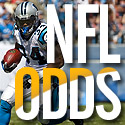Fighting for second
08/05/2000
Codding Home / Sports Channel / Bullz-Eye Home
This season's Major League Baseball trading frenzy ended on July 31st with a handful of small, yet meaningful trades, along with a few potential power-swinging deals. Of course, the Curt Schilling trade caught most of the sports world's attention, but only because Denny Neagle, David Justice and Andy Ashby had been traded weeks earlier. Still, Arizona was able to land the prized name on the market this year and really didn't give up much more than a couple of disappointing veterans and two promising young pitchers, a price the 'Backs were more than willing to pay.
The Atlanta Braves picking up left fielder B.J. Surhoff was a great move by the perennial World Series runners-up, and combined with the addition of Ashby to a confused pitching staff, should once again make the Braves the favorites to lose the World Series to the Yankees. No, I don't see any team in the AL or NL getting past the Bombers this year, truly a sickening thought, but I'm only being realistic. Neagle may not be the pitcher Curt Schilling is, but as a very talented and tested lefty veteran, he's not far behind. Justice has been everything King George wanted, and Glenallen Hill really has solidified the bench - stop laughing. Plus, they hung on to prized minor leaguer Alfonso Soriano through all these dealings, and don't discount the trade they made for the dependable Jose Vizcaino in late June or the recent signing of Luis Polonia, an invaluable set of wheels off the bench. Yes, very quietly the Yanks have moved themselves to the top of the baseball hill once again.
But I will resist the temptation to submit my own "report card" on the deadline deals. Check out the Baseball Sites in Bullz-Eye.com's Web Guide to find your favorite site's own rankings. I won't focus on the Baltimore Orioles and how they somehow managed to become an even sorrier team after they traded away their high-priced veterans for "prospects." (A quick note to Peter Angelos though: When you dump salary, you're supposed to trade those high-priced vets for a bunch of "promising youngsters." Melvin Mora and Brook Fordyce don't fit that definition.) Instead, I'd like to point to the significance of three trades the Cleveland Indians made.
Now, before I go any further, I'd better explain something. As some of you probably know, I am a die-hard Indians fan. But I don't intend to use this weekly column to gush about the Tribe. Peter Gammons, a Boston Globe columnist, loves to do that with his ESPN online column and whenever he appears on either Baseball Tonight or SportsCenter. That bothers the hell out of me. But the Indians made some moves that some people seem to be overlooking, and as a baseball fan I think they were fantastic deals.
First, Richie Sexson could become a very good player. However, he's got a Swiss cheese swing: way too many holes. That doesn't mean necessarily that he's a terrible hitter, but his height leaves him vulnerable to inside pitches and he hasn't been able to correct that weakness yet. The Brewers have themselves a young hitter with a lot of promise, but the Indians were able to get a reliable bullpen guy in Bob Wickman (although I still can't figure out why Steve Karsay didn't remain the closer), and two younger pitchers to help shore up their bandaged and bleeding rotation in Steve Woodard and Jason Bere. Sexson needed a change of scenery and Cleveland already had Russ Branyan and Jim Thome to strike out 170 times a year.
Woodard, 25, has shown a lot of potential in his three-plus years in Milwaukee. He may not be a #1 starter, but he's a solid four or five, which is exactly where Cleveland needs him. Bere, 29, was once a prized pitcher for the White Sox before several arm injuries decimated his career. However, several scouts say his ball has as much movement and zip on it now as it did in 1993-1994 when he went a combined 24-7 with an ERA under 4.00. He may not be that #1 starter either, but with Bartolo Colon slowly rounding into form, the Indians don't necessarily need him to fill that role. If Bere keeps throwing the ball like he has so far for the Tribe (2-0, 2.40 ERA, 14 Ks in 15 IP), I'm sure manager Charlie Manuel will be happy.
Trading Ricky Ledee to the Rangers for David Segui brought a true "professional hitter" to the shores of Lake Erie. With Thome and Branyan clogging up the middle of the order with their all-homer, no-contact styles of hitting, Segui will break up that rally-killing strategy with decent power and a smooth swing. Trading Alex Ramirez and Enrique Wilson for Wil Cordero may be a puzzling move as the Indians could have just resigned him at the end of last season, but it's still a move that brings in some much-needed, proven offense. These are two guys who resemble the players the Indians relied on in 1995 when their AL Central run started, hitters like Carlos Baerga and Eddie Murray who had solid swings, were great situational hitters and didn't strike out much. Hopefully GM John Hart realizes a lineup filled with hitters like Segui and Cordero has a much better chance of winning than one filled with Thome, Branyan and Sexson.
So two young starting pitchers, a dependable closer, a great contact hitter and another decent all-round hitter, yet all they really gave up were two decent outfield prospects who hadn't proven themselves in the Majors yet (Ramirez and Ledee), a utility infielder (Wilson), two low-level pitching prospects (Kane Davis and Paul Rigdon) and then Sexson. Cleveland bettered itself in every possible aspect, shoring up bullpen and rotation problems while becoming a better hitting team. If anything, Wilson was the hardest player to give up for Hart. After all, this is a guy who can play any infield spot and, when given the chance to start, has proven himself to be a capable hitter.
At the risk of being your typical "homer," I'd say Cleveland now has the second-best team in the AL. Colon, Chuck Finley, Dave Burba, Bere and Woodard make for a very solid rotation that few teams can beat, and the offense still has a lot of juice left, especially if Kenny Lofton, Omar Vizquel and Robbie Alomar start bringing their bats to the plate again. But if they fail to either catch the White Sox or snag the Wild Card, it'll all be a wash anyway.
Rebounding Magic?
A quick note on the Orlando Magic Dynasty that everyone is gushing about right now: Where's the rebounding? Yes, they traded for Grant Hill and Tracy McGrady, but if Orlando signs Clippers free agent Maurice Taylor as they are expected to do, here's the projected starting lineup, complete with last season's rebounding averages:
PG: Darrell Armstrong 3.3 r/g
SG: Tracy McGrady 6.3 r/g
SF: Grant Hill 6.6 r/g
PF: Maurice Taylor 6.5 r/g
C: John Amaechi 3.3 r/g
How does your starting center manage to only grab 3.3 boards per game? What a chump. Sure, this team is going to score a ton of points, but when your point guard is just as effective on the glass as your center, and your shooting guard pulls down as many rebounds as your power forward, you're in some deep kaka. Too bad Orlando sent Ben Wallace, their best pure rebounder last year, to Detroit in the Hill deal. Guess Tim Duncan really was Doc Rivers' top priority, huh?
In the Bullz-eye:
New Diamondbacks pitcher Curt Schilling. He's been great so far for Arizona (2-0, 17 IP, 0.53 ERA) and has been solid for over a month now. He'll need to be almost as good as Randy Johnson, though, if Arizona plans on making any noise in October. With Matt Williams and Jay Bell struggling, the offense won't keep up with Atlanta or New York, meaning Schill needs to be on his A-game for the next three months.






